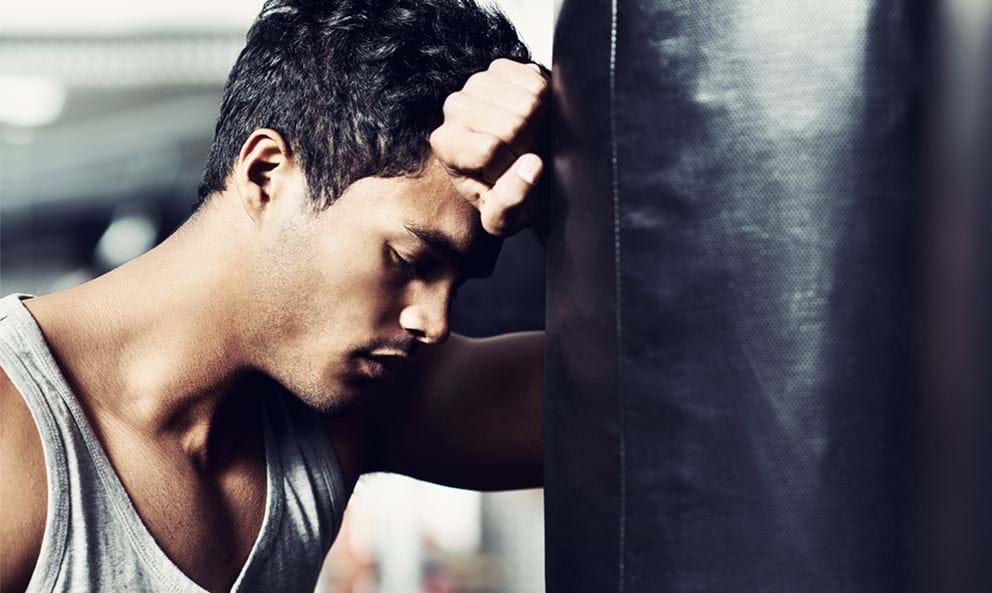The best stretches for lower back pain

Written by Phil Williams, Personal Trainer at PureGym Manchester Spinningfields
Many of us spend our days sitting and working at a desk, which can often trigger lower back pain. It's easy to forget our posture when we're busy at work so here are a few simple tips and exercises to help prevent lower back pain which you can try implementing today.
Before we look at my 5 favourite exercises to help reduce lower back pain, here’s my top two tips to ensure that your workplace environment is set up optimally for you to work.
Tip one: ensure your seat is set up correctly for you. Your chair should be set to a height that allows your feet to be flat on the floor, with your knees at hip level. Make sure both your upper and lower back are supported by the chair and/or a small cushion and adjust the armrests so that your shoulders are relaxed.
Tip two: adjust your posture. Push your hips to the back of the chair, then pull your shoulders back, keeping your chest high and your head and neck in line with your body.
These two tips alone will ensure you’re sitting comfortably and able to work throughout the day without causing further lower back problems.
Once you’ve mastered this, it’s time to head to the gym to take on my 5 favourite movements to help reduce lower back pain.
QL stretch
Why this helps?
Your QL is the deepest of abdominal muscles, located either side of your spine in your lower back. It is extremely common for blood flow to be restricted to this area after sitting for long periods of time, which can cause pain and stiffness. This stretch can help to reduce some stiffness and alleviate the tension in the area by lengthening the muscle.
How to perform the exercise
Place the forearm onto the wall, cross the inside leg over the outside leg, and drive your hip to the wall. Hold this one for around 20-30 seconds before changing sides.
Birddog
Why this helps?
This exercise is great for increasing in strength and stability of the abdominal muscles and to help stabilise the core. This increase in stability will over time help to support the spine and reduce in lower back pain.
How to perform the exercise
Place the hands under the shoulders and the knees under the hips whilst on all fours. Tuck the pelvis in and keep the back straight. Focusing on keeping the body as still as possible, raise one arm and the opposite leg slowly, before bringing them back down to the ground and repeating on the opposite side. It is absolutely normal for this to be difficult to do at first. Complete 3 sets of 10 reps.
Side plank
Why this helps?
One of the main causes of lower back pain is having a weak core. When performing exercises like squats, deadlifts and standing shoulder presses, your body requires a lot of core strength. Without this, you will place a lot of pressure on your lower back/spine. Side planks can help to build up strength and stability in the core muscles over time.
How to perform the exercise
Start laying on your side, keeping your feet together and your forearm on the ground, directly underneath your shoulder. Push your hips towards the ceiling, whilst contracting your core, to work your abdominal muscles. Hold this for 10-30 seconds.
Pallof press
Why this helps?
Similar to the side plank, this exercise works by resisting pressure placed onto the core. This movement, however, is easier to add load to, therefore allowing you to progress over time with it. It may not look like a core exercise, but after a couple of sets done correctly, your core will be on fire.
How to perform the exercise
Stand with your feet, knees, hips and shoulders in line with each other. Keep your chest high and push the handle forwards, focusing on drawing a straight line with your hands and not allowing the cable to twist your body around. Keep the movement slow and controlled, if you’re feeling rushed, you probably need to reduce the weight. Complete 3 sets of 12 reps.
Glute bridge
Why this helps?
Having weak glutes is extremely common if you spend a lot of time sitting on them - but don't worry! Exercises like the glute bridge will strengthen these muscles over time, taking stress away from the lower spine, and placing it onto the muscles of the bum.
How to perform the exercise
Lie onto your back, with your feet flat on the ground and your arms by your side. Contract the glutes and push them into the air whilst placing a large portion of your bodyweight onto the heels of your feet, before slowly bringing your hips back down to the ground.
If your job requires you to spend endless hours every single week sat at a desk, having lower back problems might not be something new to you. Adding these exercises into your weekly workout routine can help to alleviate and prevent lower back pan. I would always start by focusing on the cause of the problem, change your chair and your sitting position, then get yourself to the gym to complete the 5 exercises written above. You may also set some reminders to take a break from your desk throughout the day, like to fill your water bottle, so you aren't complete sedentary.
*Please consult your Doctor or a qualified professional if you are experiencing back pain.
For more training tips from Phil, check out his instagram: @philwilliamspt. We also provide more advice for lower back pain throughout the PureGym blog, including this mobility exercises and stretches for lower back guide, and these yoga poses to help with back pain. Get started by joining a PureGym near you today.


